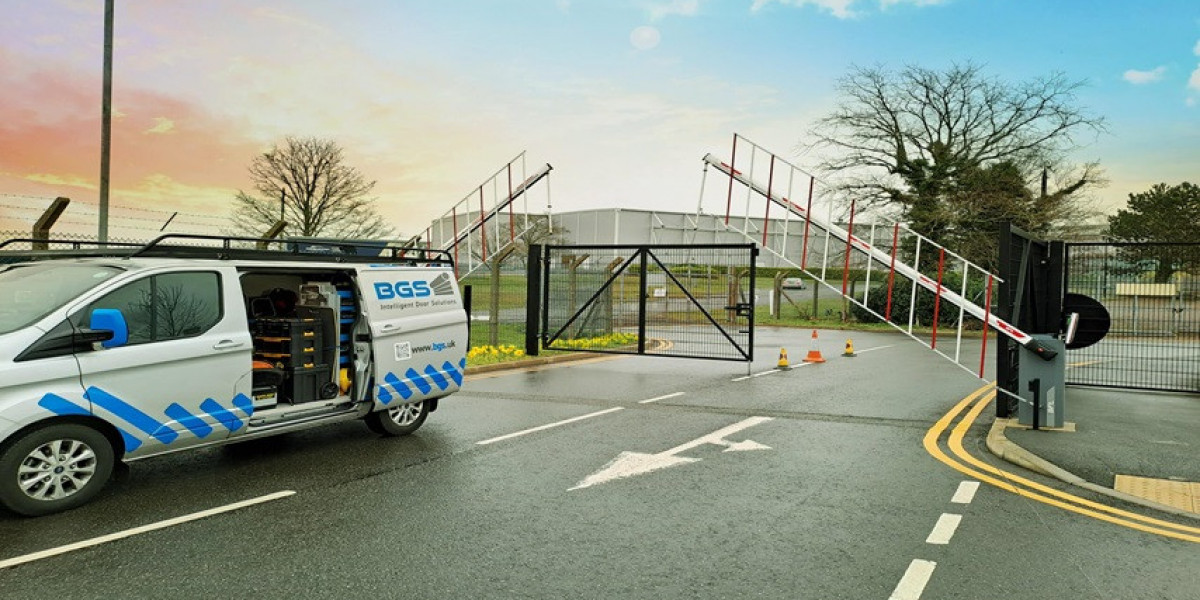One of the most effective ways to enhance security is by integrating traffic barriers with CCTV (Closed Circuit Television) systems. This combination provides both physical deterrence and real-time monitoring, ensuring that restricted areas remain secure and that any security breach can be quickly identified and addressed.
In this blog, we'll explore the benefits of integrating traffic barriers with CCTV systems, how they work together, and why this approach is critical for enhancing security in both commercial and residential settings.
1. Enhanced Access Control
One of the primary advantages of integrating traffic barriers with CCTV is the ability to have better control over access points. Traffic barriers physically restrict entry, while CCTV cameras provide visual monitoring of anyone attempting to pass through.
For example, if a vehicle approaches a restricted area, CCTV footage can be reviewed by security personnel in real time to verify the vehicle’s authorization before the traffic barrier is raised. This ensures that only authorized vehicles gain access and that any suspicious activity is spotted before entry is granted.
2. Real-Time Monitoring and Response
The integration of traffic barriers with CCTV allows for continuous real-time monitoring of entry and exit points. This is especially critical for facilities with heavy traffic, such as industrial sites, commercial complexes, or gated communities. By monitoring the footage, security teams can identify potential threats, monitor for unauthorized attempts to breach barriers, and immediately take action if needed.
When these systems are combined with automated alerts or smart technology, security teams can respond quickly to any incidents, such as a suspicious vehicle or an attempt to bypass the barrier.
3. Comprehensive Security Coverage
Traffic barriers on their own provide a physical restriction, but when combined with CCTV, they offer a more comprehensive security solution. The cameras can be positioned to cover various angles around the barrier, ensuring there are no blind spots. This level of coverage ensures that any potential threats, whether they be intruders or accidents, are captured on camera for review and action.
For instance, cameras can monitor the perimeter, barrier operations, and the surrounding environment, providing a full view of the area and enhancing overall security coverage.
4. Automated Security Solutions
Modern traffic barriers and CCTV systems often come equipped with smart technology that allows for automation. This means that the system can operate without constant manual intervention. For example, license plate recognition (LPR) technology can be used in conjunction with CCTV to automatically raise barriers for authorized vehicles, without the need for a security guard to be present.
By automating access control, facilities can reduce the risk of human error while ensuring seamless entry and exit for authorized personnel. Additionally, CCTV systems can be programmed to send alerts or trigger alarms when an unauthorized vehicle or individual is detected, further enhancing the security process.
5. Evidence Collection and Legal Compliance
In the event of a security breach, having an integrated system of traffic barriers and CCTV footage provides valuable evidence for investigations. The recorded footage can be used to identify perpetrators, document the sequence of events, and provide clear evidence for law enforcement or legal proceedings.
Many industries and sectors, such as government buildings, airports, and corporate offices, have strict regulations regarding security measures. Combining traffic barriers with CCTV helps these facilities meet compliance requirements by demonstrating that they have implemented both physical and technological security measures to safeguard the premises.
6. Increased Deterrence
The mere presence of traffic barriers and CCTV cameras acts as a deterrent for potential intruders or vandals. Physical barriers signal that the area is protected, while visible cameras communicate that any unlawful activity will be recorded. This combination creates a powerful security measure, reducing the likelihood of attempted break-ins or damage.
Furthermore, barriers equipped with signs stating that the area is under video surveillance serve as a psychological deterrent, making unauthorized individuals think twice before trying to gain access.
7. Improved Safety for Pedestrians and Drivers
Traffic barriers integrated with CCTV not only provide enhanced security but also improve safety for pedestrians and drivers. By monitoring traffic flow, CCTV systems can identify any dangerous driving behavior or traffic violations around the barrier areas, such as vehicles speeding through or attempting to drive around the barrier.
In cases of accidents or emergencies, the footage can also be reviewed to understand what occurred and to ensure that similar incidents don’t happen again. This is especially important in busy areas like parking lots, industrial sites, and transport hubs, where the potential for accidents is higher.
8. Integration with Other Security Systems
Traffic barriers and CCTV systems can be integrated into a wider security network. They can work seamlessly with other security components such as intercoms, alarms, and access control systems to create a unified security approach. This is especially useful for large facilities with multiple points of entry, where having a centralized system allows security teams to monitor all access points simultaneously and take action when needed.
For example, if an unauthorized vehicle is detected at one barrier, the system can automatically lock down other access points, preventing further entry and minimizing risk.
9. Long-Term Cost Savings
While the initial investment in integrating traffic barriers with CCTV systems may seem high, it can actually result in long-term cost savings. Automated systems reduce the need for extensive security personnel, as the technology can manage many of the monitoring and access control functions. Additionally, by preventing unauthorized access and potential security breaches, facilities can avoid costly damages, theft, or disruptions to operations.
The presence of a strong, integrated security system can also lower insurance premiums, as it demonstrates a commitment to protecting the property and reducing risk.
Conclusion
The integration of traffic barriers and CCTV offers a powerful, multi-layered approach to security. From enhancing access control to providing real-time monitoring and serving as a deterrent, this combination ensures that both physical and digital security measures are working together to protect properties, facilities, and people.
At BGS, we specialize in providing state-of-the-art traffic barriers and CCTV systems that can be tailored to your specific security needs. Whether you're securing a commercial property, industrial site, or residential complex, we can help you design and implement a comprehensive security solution.
To learn more about our services and how we can assist with traffic barriers in Bridgend, visit our page on traffic barriers Bridgend. Let us help you enhance your property’s security with the latest in barrier and surveillance technology.









